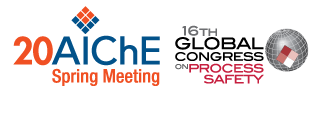

This paper, based on a CCPS Guideline that will be published in 2020, discusses ten different start-up and shut-down operating modes associated with normal operations, abnormal operations, and emergency operations. All of these operating modes must be clearly defined to establish consistent terminology when conveying the risks associated with start-ups and shut-downs—and how to effectively manage them during the transition time. The process shut-downs activated during emergency operations, for example, will affect how the process is restarted: Did the emergency shut-down damage the equipment? Did the equipment end up at a safe state that differs from the normal shut-down? Should there be a different start-up procedure after an emergency shut-down?
Over fifty incidents which occurred during either a start-up or a shut-down have been compiled and analyzed for the Guideline. These incidents were attributed to weaknesses in many Risk Based Process Safety (RBPS) elements, including administrative controls that did not work as planned and engineering controls that did not perform as expected. Due to these RBPS Element-related weaknesses, unexpected events occurred, often resulting significant incidents when quick decisions were made without an adequate understanding of the hazards, evaluation of the risks, or management of the changes. In particular, incidents occurred during the transition time when unexpected preventive and mitigative engineering controls failed due to a poor asset integrity and reliability program (such as an inadequate Inspection, Testing, and Preventive Maintenance (ITPM) program) and inadequate operational readiness reviews before attempting the process restarts.
Was the risk higher really higher during the start-up? How important is leadership, the process safety culture, and operational discipline during these transition times? How can we effectively manage the risk during transient operations? Those are some of the questions which will be explored and answered.
Presenter(s)
Language
Pricing
Individuals
| AIChE Member Credits | 0.5 |
| AIChE Pro Members | $19.00 |
| Employees of CCPS Member Companies | Free |
| AIChE Graduate Student Members | Free |
| AIChE Undergraduate Student Members | Free |
| AIChE Explorer Members | $29.00 |
| Non-Members | $29.00 |
